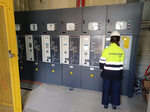Offshore Wind: Ireland's economic and social opportunity
KPMG today published a new report for The National Offshore Wind Energy Association of Ireland (NOW Ireland) into the growing renewable energy demand in Ireland and the scale of the opportunity that this represents, particularly in offshore wind. The report reviews the various technology options to meet the demand for renewables, and where and how offshore wind can be a key part of the solution.
Ireland is expected to experience strong, sustained growth in electricity demand between now and 2030. In an analysis of various future energy scenarios, EirGrid estimated that Ireland’s total electricity requirement will increase by between 22% and 53% by 2031. This will be due to both economic growth, as well as specific growth in high energy industries, such as data centres and electric vehicles.
Meeting demand
The increase in supply to meet that demand must come from renewable sources in order to satisfy national and EU targets. Ireland has set a target that 40% of all electricity comes from renewable sources by 2020, rising to at least 55% by 2030, with many industry participants encouraging 70% by 2030.
The report’s author, Mike Hayes, Global Head of Renewables, KPMG and Partner in KPMG Ireland, said “While solar and onshore wind can and will play a key role, offshore wind’s scale and deployment capacity means it has to be at the centre of our strategy to meet this demand. Dramatic reductions in technology prices and improved performance now mean that offshore wind costs a fraction of historic pricing, with a trajectory to hit parity with other technologies in the medium term”.
“I was delighted to hear the Taoiseach state that climate action is a top priority of his Government, and I believe this report is consistent with Government’s targets in relation to the development of renewable energy in Ireland and building a sustainable, low-carbon society”. Hayes added.
Achieving targets
Paddy Teahon Chairman of NOW Ireland underlined that in order to achieve Government targets and stimulate investment and activity in the industry, the critical policy actions that have to be put in place are:
- Inclusion of technology-specific supports for offshore wind within the proposed renewable electricity support scheme (“RESS”);
- Issue foreshore leases under the current Foreshore Act to enable Irish sea projects to commence development in the immediate term
- Introduce a Foreshore Amendment Act dealing specifically with offshore wind
- Implement a specific offshore wind grid connection round for Irish sea projects
“There is already a strong pipeline of offshore wind projects in the Irish sea,” said Paddy Teahon, “With the Government actions identified, these projects could deliver c.1000MW of capacity in the immediate future, and an additional c.3000MW by 2030. We are an island nation, with extensive territorial waters. We see other countries in Northern Europe revitalising coastal communities through investment in offshore wind. It’s time for Ireland to take this opportunity; clear and early signals will allow projects to come forward, and will enable the Irish supply chain to maximise benefit from this game changing technology.”
NOTE:
NOW Ireland – The National Offshore Wind Energy Association of Ireland promotes the development of Ireland’s substantial offshore wind resource to ensure that our island leads the way in building a sustainable, green economy.’
- Source:
- KPMG
- Author:
- Press Office
- Link:
- home.kpmg.com/...
- Keywords:
- KPMG, Ireland, offshore, wind energy, social opportunity, economy, jobs, renewable energy, low-carbon


























